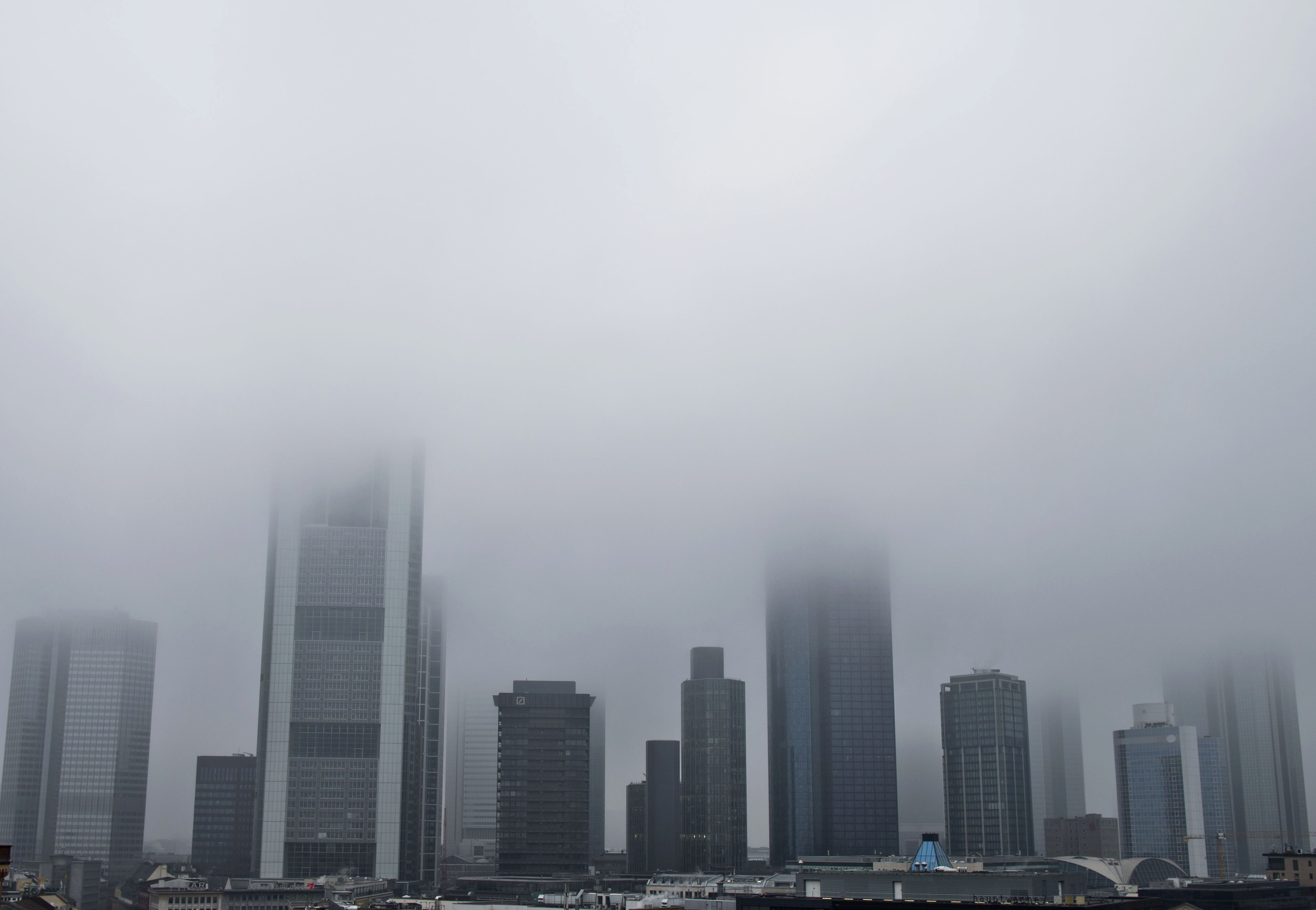Multilateral institutions
Crisis credit

When Lehman Brothers, the investment bank, collapsed in October 2008, the global financial system’s credit supply suddenly and almost completely dried up. Many experts feared that emerging economies, in particular, would be cut off from the international capital markets. The blow was significantly cushioned off by the multilateral development banks – the World Bank and regional development banks – and the International Monetary Fund (IMF). After the outbreak of the financial crisis, they all made short-term money available to emerging markets and developing economies.
For the international financial institutions (IFIs), such a response to the global financial crisis entailed commitments on an unprecedented scale. As the chart shows, the IFIs lent considerably more in the years following the crisis (2008–2010) than in the years running up to it (2005–2007). The decision that paved the way for this massive increase was taken by the G20 heads of state at their first summit in Washington in November 2008. Providing short-term assistance to cushion off external shocks is traditionally the IMF’s job, whereas the multilateral development banks are supposed to focus on long-term lending. In principle, the G20 governments have called for a clear division of labour among the IFIs which is to be achieved by a comprehensive reform of the Bretton Woods institutions as demanded primarily by emerging-market governments. Nonetheless, the outbreak of the crisis demanded swift action, which caused considerable blurring of the institutions’ roles.
The lion’s share of the extra financial resources went to middle-income countries. As they are integrated into international financial markets, they were hit directly by the sudden drop in lending. Poorer developing countries, however, also felt the impacts of the crisis, especially when their export revenues slumped in 2009. Nonetheless, little additional money was made available to them. IFIs normally grant them concessional loans with subsidised interest rates and long repayment times as well as grants. But this time, the crisis-hit industrial countries were not prepared to increase such funding significantly. The IMF increased its funding for low-income countries, but not to the same extent as it boosted its support for emerging markets.
Reacting to the crisis, the IMF resorted to innovative instruments. Its traditional tools are standby loans, to which strict economic policy conditions are attached. This time however, the Fund offered short-term liquidity with practically no conditions to countries with sound macroeconomic policies in the context of its new Flexible Credit Line.
Many countries were reluctant to seek IMF support however. They generally did not need liquidity support anyway since they had sufficient foreign-exchange reserves. Many preferred budget support, an instrument with which the World Bank and regional development banks support national policies and programmes through government budgets. In the crisis, however, such loans served anti-cyclical policy – increasing government spending and lowering taxes with the goal of stimulating the economy. A substantial amount of the extra money made available by development banks thus took the form of budget support, which made sense in lack of other ways to provide short-term support.
In addition, the World Bank established the Deferred Drawdown Option – a kind of standby credit line for middle-income countries. For countries such as Indonesia, which balked at applying to the IMF for political reasons, the instrument proved a useful hedge against drains on foreign-exchange reserves.
Moreover, the International Development Association (IDA), the World Bank subsidiary that grants concessional loans to low-income countries, established a fast track by restructuring – though not increasing – the resources available. IDA can thus make funding available to national budgets swiftly. Increasing IDA’s resources would have been difficult because such a step would have required mobilising additional money from donor nations.
The multilateral development banks played an important role in the crisis. In comparison, the IMF programmes, with few exceptions, were taken up only slowly at first. Below, we consider in detail the action of the various IFIs.
Little recourse to IMF loans
To enable the IMF to assume its role as stabiliser of international financial markets, the G20 agreed in April 2009 to treble its lending resources from $ 250 billion to $ 750 billion. In subsequent steps, the volume of resources upon which the IMF can call if required was boosted to $ 1.4 trillion. One of the primary reasons for approving this increase was to secure the IMF’s capacity to act in the euro crisis. The IMF also increased the amount of Special Drawing Rights (SDR), an international reserve asset created by the IMF, to supplement its member countries’ official reserves. Two allocations made in August and September 2009 raised the cumulative total nearly tenfold, from SDR 21.4 billion to SDR 204 billion (approx. $ 314 billion). As a result, IMF member countries have access to more long-term liquidity, which should improve their ability to weather financial storms.
As mentioned above, the IMF re-designed some instruments. It created new preventive credit lines with ex-ante conditionality: the Flexible Credit Line (FCL) and the Precautionary and Liquidity Line (PLL). Both are meant to serve countries that are considered to implement sound economic policies by offering medium-term loans quickly. If they were considered by the IMF to implement prudent policies in earlier assessments, they can now access additional funding fast, which should protect them from contagion in financial crises.
Though only three countries (Mexico, Colombia and Poland) have so far qualified for an FCL, initial analysis shows that the FCL did have an important stabilising effect in a volatile global economic environment. Its mere existence resulted in narrower spreads, which ultimately meant that applicant countries had no need to draw the FCL loans. Spreads are the mark-up on interest rates that indicate the risk assessment of any given country by capital markets.
Apart from this, the IMF strengthened its role in low-income countries. It substantially increased its concessional loan resources: to $ 17 billion by 2014. It also waived interest on outstanding concessional loans for all low-income countries through to 2011. Most developing countries, however, apparently either did not need that money or were afraid of IMF conditionality and the stigma attached to IMF lending. By the end of 2012, only around $ 8.8 billion had been lent to low-income countries in concessional loans. This is not much compared with the IMF’s $ 36.6 billion lent to Greece.
In the case of developing countries, the IMF’s willingness to lend sent the right signal to capital markets, and was more important than actual loan disbursements. Indeed, two-thirds of the IMF’s loans went to over-indebted countries in Europe. The emerging-market governments supported this policy stance, but they occasionally pointed out that the European countries that were hit by the Euro crisis were doing too little to adjust. In their eyes, the IMF is treating European countries and Europe’s hesitant measures to stabilise the euro with unusual leniency.
World Bank support for emerging markets
In the crisis, the World Bank tripled non-concessional funding for middle-income countries (IBRD loans). A large share of that money went to emerging markets that are members of the G20. Some of them thus managed to avoid approaching the IMF and were spared the stigma attached to IMF funding. One might even argue that the emerging-market members of the G20 helped themselves considerably by approving capital increases for the World Bank and regional development banks, whereas poorer countries largely lost out because IDA funding was not increased as well.
In addition to IBRD loans, the World Bank offered financial assistance to compensate commercial banks’ withdrawal from emerging markets and developing countries. A global credit line was created, for example, to protect microfinance institutions in developing countries. Apart from that, trade financing guarantees and credit lines of up to $ 5 billion were made available through the International Finance Corporation (IFC), which is another member of the World Bank Group and supports the private sector. However, experts criticised the IFC for acting pro-cyclically in 2009 because it cut back its operations just as private-sector banks did.
The World Bank, like the IMF, disbursed only a part of its credit resources straight away. The World Bank is not geared to fast disbursements, partly because project as well as budget support require quite a bit of preparations. Only 56 % of IBRD commitments were disbursed in 2009, for example, and the respective share for 2010 was 65 %. IDA only disbursed 66 % of the money it committed in 2009 in that year, and the respective share for 2011 was only 63 %.
In many cases, however, the signal that a loan from the World Bank Group sent to capital markets was more important than its actual disbursement. It is evident in the swift return to normal of government bond spreads, that the availability of resources certainly had a positive impact on middle-income countries’ refinancing costs in the international capital markets.
It is remarkable that the World Bank focussed its commitments on a small group of countries. Between 2008 and 2010, six countries accounted for 58 % to 68 % of the total volume of IBRD loans. Brazil, Indonesia and Mexico figured among them for the entire period, and China, Turkey and India were each among them for two of three years.
It was a similar story with IDA resources, which are specifically earmarked for poorer countries, in the years 2008 to 2010: 48 % to 52 % went to just four of 79 eligible countries. Among the biggest recipients were fairly developed countries like India, Vietnam and Nigeria. This trend is problematical, even though the reason for it is rooted in IDA eligibility criteria, which favour large countries with relatively strong institutions. IDA funding, however, is highly concessional and was originally intended for disadvantaged countries.
For the World Bank and the regional development banks, the question now is whether they should carry on using their money for short-term crisis management or whether they should leave that area of activity to the IMF, which is actually responsible for these matters. As poor countries are particularly vulnerable, no one disputes that IDA should upgrade its recently established tool, the Crisis Response Window (CRW). CRW support can help developing countries cope with short-term shocks such as natural disasters or unusual food and energy price volatility. At present, the CRW accounts for only five percent of IDA funds. At the end of 2011, however, IDA created an additional facility: the Immediate Response Mechanism. This enables countries to access approved loans, that have not been disbursed yet, within weeks.
A more difficult question is: should IBRD budget support to middle-income countries ever be used again as a crisis management tool or should the primary role of the development banks remain confined to funding long-term investments? In the latter case, the IBRD would focus on “inclusive green growth”, the path to sustainable development agreed at the 2012 G20 summit in Mexico and leave crisis financing for middle-income countries to the IMF.
Literature:
Griffith-Jones, S., and Gottschalk, R., 2012: Exogenous shocks – Dealing with the only certainty: uncertainty. Paper prepared for the Commonwealth Secretariat, London.
G20, 2009: G20 Working Group 4: The World Bank and other multilateral development banks. Final Report.
IWF, 2009: Background note: The IMF response to the Global Crisis: Meeting the needs of low-income countries. Washington D.C.
http://www.imf.org/external/np/lic/2009/072909.htm
IWF, 2010: The Fund’s mandate – Future financing role, finance, legal, monetary and capital markets, research and strategy, policy and review departments in consultation with other departments. Washington D.C.
http://www.imf.org/external/np/pp/eng/2010/032510a.pdf
Marino, R., and Volz, U., 2012: A critical review of the IMF’s tools for crisis prevention. Bonn: German Development Institute/Deutsches Institut für Entwicklungspolitik (DIE), Discussion Paper 4/2012.
McKay, J., Volz, U., and Wölfinger, R., 2011: Regional financing arrangements and the stability of the international monetary system. Journal of Globalization and Development, Vol. 2 (1), 2011, Article 1.
Volz, U., 2012: The need and scope for strengthening co-operation between regional financing arrangements and the IMF. Bonn: German Development Institute/Deutsches Institut für Entwicklungspolitik (DIE), Discussion Paper 15/2012.
World Bank, 2011: The World Bank Group’s response to the Global Economic Crisis. Washington D.C.














